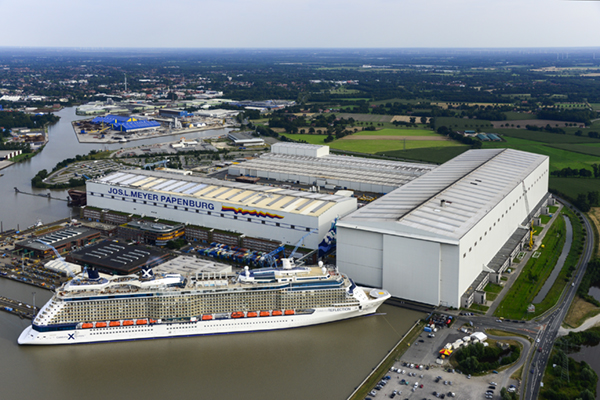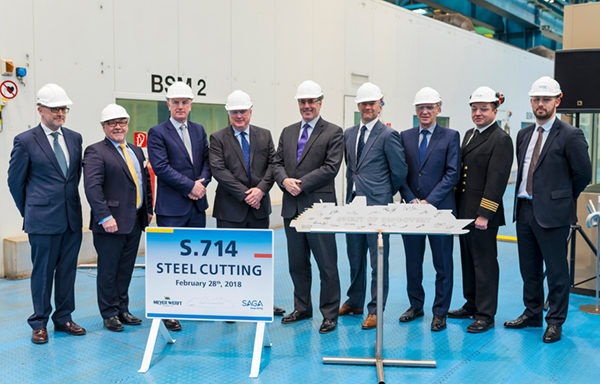
|
|
Ship classification (class approval) normally involves the exchange of numerous large-format drawings between a shipyard and a classification society. In addition to this, Meyer Werft in Papenburg will for the first time also be providing the classification company DNV GL with 3D models of a cruise ship. The digital class approval process is based on PROSTEP's 3D PDF technology. 
Every time a new ship is built, the shipyard in question must provide proof that the ship can withstand stresses involving, for example, swell, weather or cargo. With a view to protecting the environment, documentation regarding the use of hazardous materials and the emission of pollutants during operation has also been required in recent years. Verifying all this is a task performed by classification societies. Only when a vessel has been assigned a certain ship class, e.g. for a region or certain purpose, can the shipping company involved obtain insurance for the ship and is allowed to call at ports or travel through sea areas. Traditionally, classification is a paper-based process for which the shipyards have to produce, among other things, vast quantities of large-format classification drawings and send them to a classification society for review. These are then returned to the shipyards with the required changes marked up in red – an iterative process that is time-consuming. That is why efforts to accelerate this process through the use of 3D models have been under way for years. Thanks to the solution PROSTEP has developed on the basis of 3D PDF technology, Meyer Werft and DNV GL have now reached an important milestone on the road to digitalization. 
The aim of the joint "3D Approval by Class" project is to replace 2D drawings by incorporating intelligent 3D information that is already available in a 3D PDF document and thus make the approval process more efficient. In the pilot project, the partners are concentrating on the drawings of the steel structures created by the Steel Basic Design group at Meyer Werft. The design engineers automatically derive the 3D PDFs from Catia V4 and V6 according to the “need to know” principle: Only the information required for the class approval process is displayed in the 3D PDF. In 2017, Meyer Werft and DNV GL performed a benchmark in which paper drawings and a 3D PDF were tested and compared simultaneously on a tablet device. The primary aim was to create a proof of concept but also to assess the extent to which the technology needed to be adapted and enhanced. The information provided by the benchmark is now being used to further develop the 3D approval solution. PROSTEP not only provides support for the implementation process but also runs the PDF Generator 3D software on the MW IT infrastructure in cooperation with Meyer Werft’s IT department. PROSTEP's solution allows CAD models and associated metadata to be converted automatically into 3D PDF documents that contain all the information and functions (e.g. color coding, filtering, redlining, etc.) that Meyer Werft and DNV GL need for the class approval process. Every 3D document comprises a complete engineering unit with thousands of individual parts. Embedding this enormous amount of data in a 3D PDF document in a way that allows for efficient navigation through the model structure posed a major challenge within the project. 3D PDF-based approval of the steel structure during the engineering process within the context of the so-called office inspection approval was successfully tested at an earlier stage. Meyer Werft sent only the 3D PDFs, without 2D drawings, to DNV GL. 
Meyer Werft and DNV GL will use the 3D PDF technology for the first time for the construction of the new cruise ship SAGA S.714. While exploring the full potential that this new solution offers, Meyer Werft will continue to also provide 2D drawings for the class approval process. However, the long-term aim is to replace the 2D drawings completely and use only 3D information. According to PROSTEP, the use of 3D PDF technology will significantly speed up the coordination process between Meyer Werft and DNV GL when classifying vessels and also save tons of paper. |
|
| © PROSTEP AG | ALL RIGHTS RESERVED | IMPRESSUM | DATENSCHUTZERKLÄRUNG | HIER KÖNNEN SIE DEN NEWSLETTER ABBESTELLEN. |

